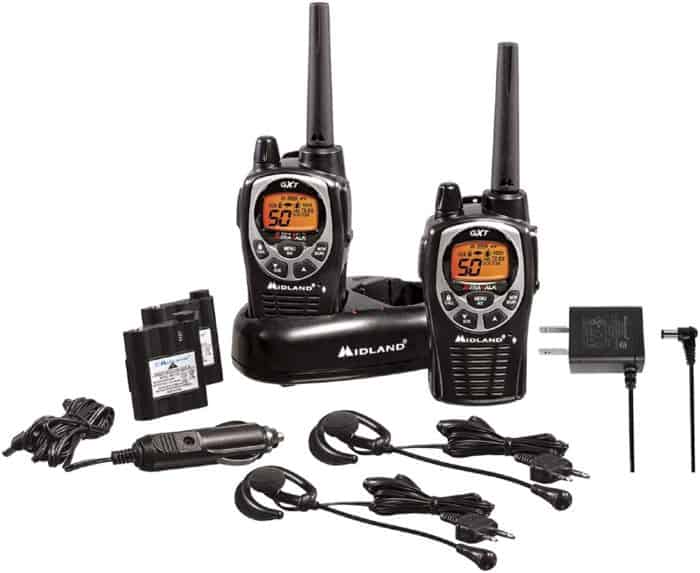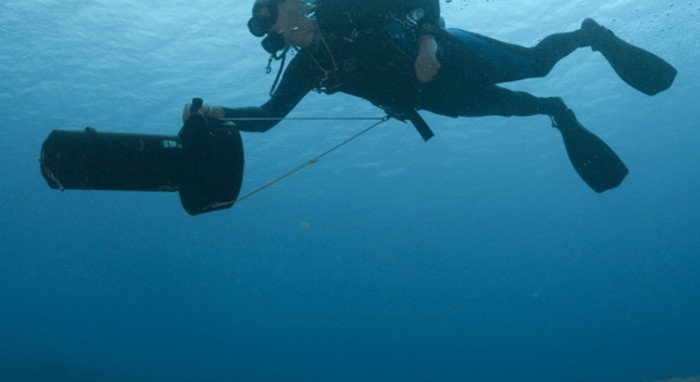Ranking The Best Marine Amplifier On The Market
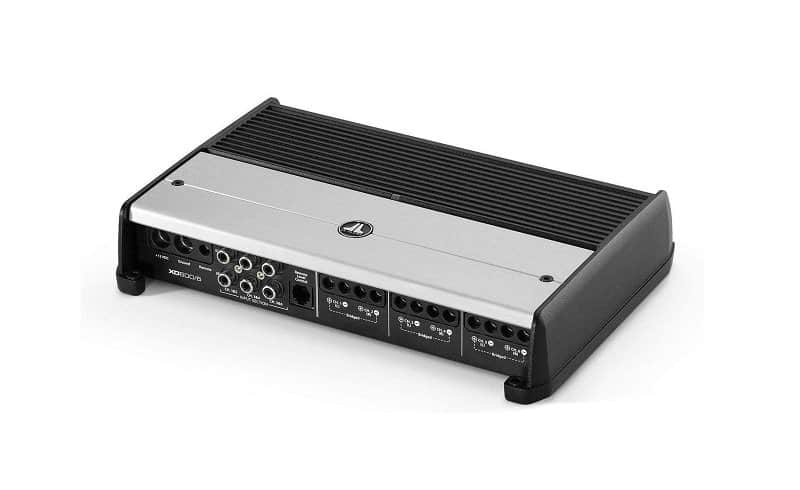
JL Audio XD600
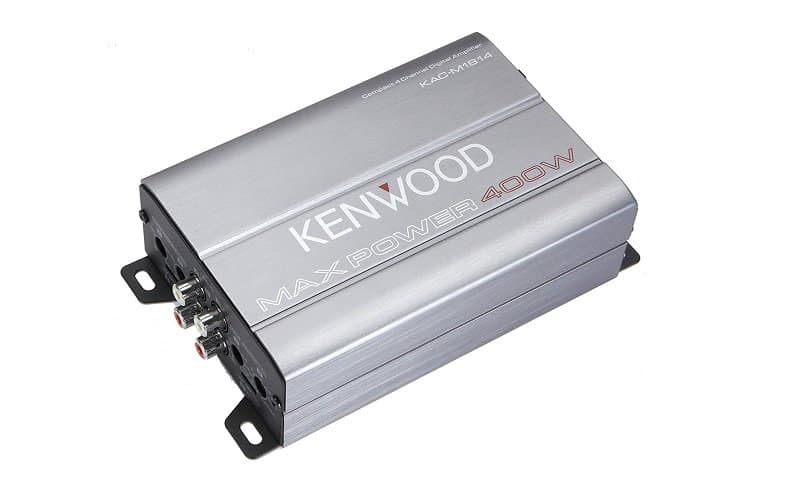
Kenwood KAC-M1814
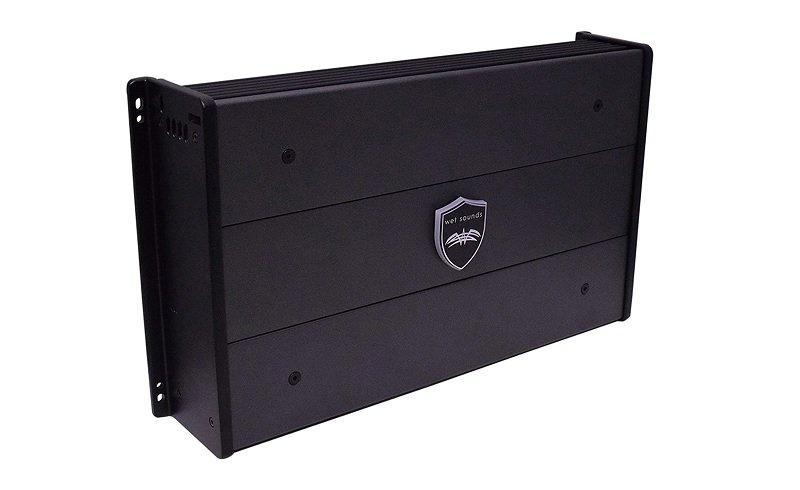
Wet Sounds SYN-DX6
If you’re serious about music and want a real sound system on board, then you’re going to need a marine amplifier. A good sound system on a boat needs the power to be played loud, and it needs to be able to withstand a wide range of weather conditions, and that’s why you’ll want noting less than a specially designed marine-grade amplifier.
Standard marine stereo systems aren’t built for real volume, and if you want to add some big speakers and a sub-woofer, then a marine amplifier is a must. These amplifiers take audio signals and increase their amplitude, increasing power and volume without distorting the sound quality. Considering that your speakers are already competing with the sound of an engine and the crashing of waves, they’ll need all the help they can get if you want them to be heard.
But you can’t just buy any amplifier. You should search for one that has been built for aquatic environments. Anti-corrosion connectors, coated circuit boards, and water-resistant controls are important features to look out for. That’s why you can’t just transplant a car amplifier. Or rather, you could, but at your own risk.
To make your search easier, we’ve compiled a list of the best marine amplifiers on the market, along with a short buying guide that summarizes all of the important features you need to look out for. Here’s all you need to know.
JL Audio XD600

The XD600 by JL Audio is a sophisticated audio amplifier that’s ideally suited for marine applications. It’s not a cheap model by any stretch of the imagination, but if you’re searching for an amplifier that can play music with unwavering clarity, deliver excellent sound no matter what genre of music you’re playing, for a reasonable price, then this is worth a look.
This versatile marine amplifier can deliver up to 100 watts of power to a total of 6 channels at 2 ohms, or 75 watts with 4 ohms. This power is made possible using JL Audio’s own NexD amplifier technology, which provides full Class D operation with minimal distortion and maximum efficiency.
With 6 channels to play with, the sound combinations that you can make are endless. You could drive all six channels with 75 W at 4 ohms, power two subwoofers with 200 W and add some smaller 75 W speakers into the mix, and tailor the sound to exactly how you want it.
This amplifier is loud, clear, warm and rich, and comes mounted in a protective unit with a durable faceplate. If you’re serious about sound, consider this amp.
Pros
Channels: 6 Channels
Power: 600 W (100W RMS x 6 @ 2 Ohms)
Warranty: 2 year manufacturer’s warranty
Features: Loud and clear amplification through up to 6 speakers
Kenwood KAC-M1814

Next, we have a more budget-friendly option. This model comes from Kenwood, one of the most easily recognizable audio brands out there. The KAC M1814 range of automotive and marine amplifiers are known for their durable nature, excellent sound quality, compact size, and affordable nature. If you need big amplification on a budget, then this could be the model for you.
The Kenwood KAC-M1814 boast an output of 400 W, which translates as 45 W RMS per speaker at 4 ohms. It can also be bridged to provide 90 W outputs to two speakers. Either way, it offers plenty of power and far more volume than you’d get from your standard head unit. While it’s not as loud as others on the market, it delivers excellent sound clarity at a volume that’s more than enough for most boaters.
Thanks to the use of Class D technology, this marine amplifier can run all day without overheating. It’s also protected from the elements with water resistant features, such as plastic covered connector cables that stops water and dust from entering the unit, and conformal coated circuit boards that reduce vibration damage and prevent components from rusting and corroding.
It’s not waterproof, but as long as you install it thoughtfully then you should have no problems using this powerful but compact little unit.
Pros
Channels: 4 Channels
Power: 400 W (45 W RMS x 4 @ 4 Ohms or 90 W x 2 bridged)
Warranty: 2 year warranty if bought through an authorized dealer
Features: Very compact marine amplifier with big volume
Wet Sounds SYN-DX6

For boaters with deeper pockets who really want to experience the best quality sound possible when out on the water, the Wet Sounds SYN-DX6 is one of the best marine amplifiers available. It’s quite an expensive investment, but if you want the best sound that you can get, it’s the price you have to pay. Wet Sounds is a brand name that’s synonymous with quality, and this unit won’t let you down.
Though it’s a 6 channel amplifier, it’s more like a 4 channel and 2 channel amp combined. With the 4 channel, you can power up to 125 W RMS to each channel, and with the 2 channel section, you can enjoy up to 150 W per channel for truly ear-splitting sound. All in, it’s a veritable powerhouse of sound that can be configured in many different ways.
The sound is massive and clear, and the huge sound is matched by this unit’s robust and durable nature. It’s designed specifically for marine environments and comes with all the necessary protection that you’d expect. It features Class D technology, thermal overload protection, water resistance, stainless steel components, and a reinforced composite enclosure.
It’s not even large in size either. For all that power, you’d expect a bulky machine, but it’s actually very small and unassuming—perfect for stowing securely on your boat.
Pros
Channels: 6 Channels
Power: 600 W (up to 125 and 150 W RMS per channel depending on configuration)
Warranty: 2 year limited warranty
Features: Completely customizable configurations for output optimization
Pyle Hydra PLMRA400 Marine Amplifier
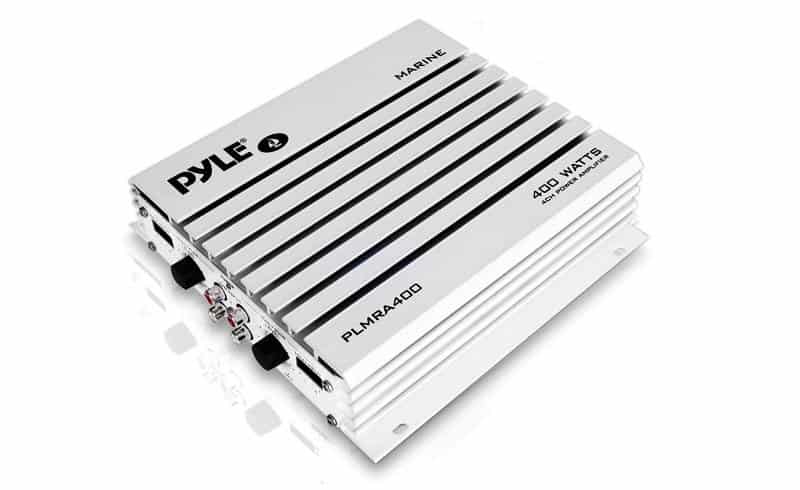
If you’re in the market for a seriously cheap amplifier that has a respectable output and won’t fall apart moments after you plug it all in, then we’d recommend taking a chance on the Pyle Hydra PLMRA400. This is a dedicated marine amplifier that caters to the budget end of the market. Don’t be put off by the word “budget” though, because this is a fine little device.
The Pyle Hydra PLMRA400 is a 4 channel amplifier that can be connected to a variety of head units. It features RCA input connectors, adjustable line level controls, remote turn on and turn off, and it’s also compatible with 4 or 8 ohm speakers.
Since it’s not the most advanced amplifier in the world, it does have some drawbacks. It’s not bridgeable. It’s a little bulky. And it’s not nearly as powerful as many others on this list. However, what it lacks in features it does make up for in other areas. For example, it comes equipped with thermal overload protection, LED lighting, aluminum components, and an unexpectedly good degree of waterproofing.
It’s corrosion-proof, moisture resistant, and it makes good music. All for a small price tag. Just don’t expect it to last forever, and you’ll be fine.
Pros
Channels: 4 Channels
Power: 400 W (70 W RMS at 2 Ohms)
Warranty: 1 year manufacturer’s warranty that covers production defects
Features: Completely customizable configurations for output optimization
JBL MA6004 4-Channel Marine Amp
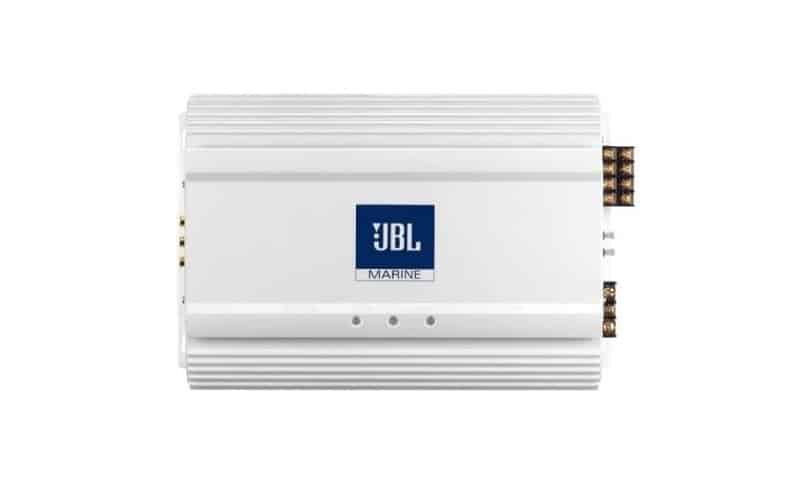
We’re big fans of JBL’s marine audio products, and this reasonably priced amp is a great choice for budget boaters who want to inject some serious volume into their boating experience but don’t want to invest huge bucks. The MA6004 is a compact 4-channel amplifier that can raise your audio levels above the volume of your boat’s motor with ease.
It’s a 600 W amplifier, but that translates more like 240 Watts in continuous usage, or 60W RMS x 4 channels at 4 ohms. It’s not the most powerful amplifier out there, but it does a fantastic job considering its size and price tag. Though it’s a 4-channel and can’t support subwoofers, it does have a handy 45 hertz bass boost option, which is a nice touch. There’s also a 12 dB variable electronic crossover for other tuning options.
The actual device is small, compact, and designed specifically for marine applications. It’s features stainless steel components that won’t rust or corrode, with fully marin-ized circuitry that won’t be affected by the negative effects of salt, sun, and sand.
Another cool feature of this little amp is the fact that it’s very easy to install and wire up. If wiring isn’t your thing then you might benefit by investing in this simple unit. It’s affordable, offers impressive sound without much distortion, and it’s super easy to set up, what’s not to like?
Pros
Channels: 4 Channels
Power: 600 W (60W RMS x 4 @ 4 Ohms)
Warranty: 1 year manufacturer’s warranty
Features: This amp is very easy to install
Kicker KXMA800.5 Boat Amp
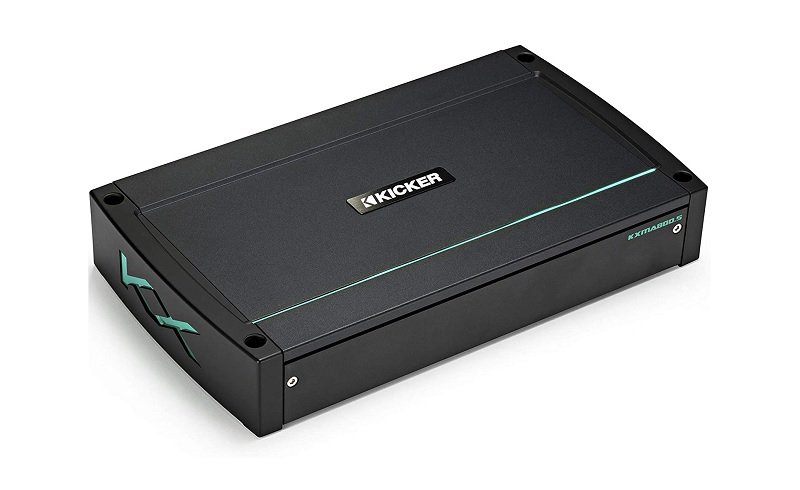
Next, we have a comprehensive marine audio amplifier from Kicker. If you’re not familiar with the Kicker brand, you should be! It’s known the world over for producing quality car amplifiers and sound systems. The brand’s marine audio equipment is also some of the best in the industry. Our top pick from Kicker is the KXMA800.5. It’s a mid-range amplifier with premium qualities.
This unit produces up to 100 W of power on the amplifier’s main channels, and it can crank up the power to an impressive 400 W on the subwoofer channels, making this quite the amplifier. The sound has no distortions, and the audio is as clear as day. There’s no shortage of adjustment either, with easy gain correction and equalization, all fully adjustable via a remote control app.
It features everything that you’d expect from a marine amplifier in terms of marin-ization. The circuit boards are all conformal coated to prevent salt and spray from causing them damage. The main body is fitted with gasket seals to keep any unwanted debris from getting in. It’s also coated with a UV-resistant coating to prevent sun damage.
The whole unit has been approved by both the American Boat & Yacht Council and the National Marine Manufacturers Association—so you can be sure it truly is marine-ready.
Pros
Channels: 5 Channels
Power: 400 W (50 W RMS x 4 at 4 ohms & 400 W RMS x 1 at 2 ohms)
Warranty: 2 year manufacturer’s warranty
Features: Full remote control adjustability with a fine tuning app
Rockville RXM8BTB Proton High-Performance Amplifier
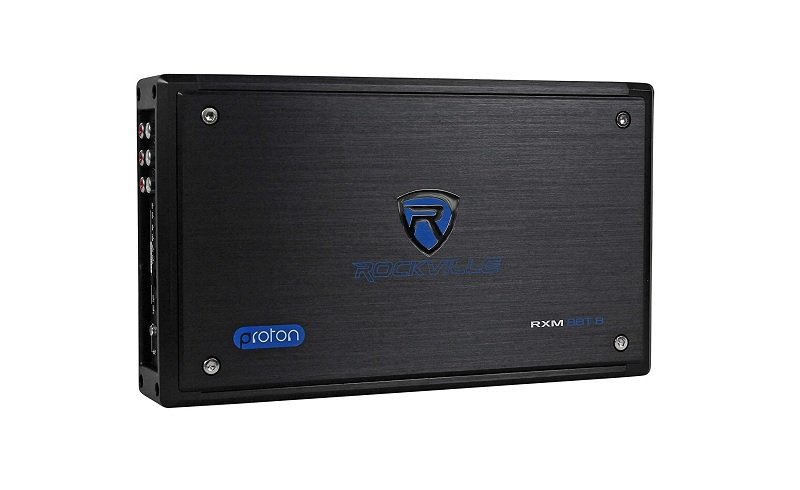
Lastly, we’ve got this beauty from Rockville. The RXM88BTB is part of the brand’s successful Proton series, and it’s a fully comprehensive marine amplifier that can do just about anything that you need it to! It’s fitted with 8 channels that you can use in a variety of configurations to set up an almost tailored audio experience.
This 8 channel marine amplifier has a huge power peak power output of 1500 W. In real terms, that power is more like either 65 W per channel at 4 Ohms, or 95 W per channel at 2 Ohms. The RMS rating is somewhere between 750 and 800 W. With 8 channels to play with there’s nothing stopping your from running your whole system through this one amplifier. You can run it any way that you want and still expect serious power in any configuration.
Since it’s a marine rated amplifier, it also features all of the necessary marine-related protectives. This CEA complaint unit features a silk screen and heat sink enclosure, conformal coated circuit boards, corrosion resistant components, all contained in a salt, spray, and moisture resistant box that also boasts UV and salt resistant paintwork. And that’s not even all of it.
Other cool features of this unit includes Bluetooth wireless audio pairing, studio grade output transistors, full bass equalization, independent crossover controls, LED power and protect indicators, TI Digital Class 4 audio topology, and more.
This is a seriously good amplifier, and ideal for those who want to run multiple speakers off of a single system.
Pros
Channels: 8 Channels
Power: 1500 W (65 W RMS x 8 at 4 ohms & 95 W RMS x 8 at 2 ohms)
Warranty: 1 year manufacturer’s warranty
Features: 8 channels to play with for the ultimate sound customization
Finding The Best Marine Amplifier: A Buying Guide
If you’re serious about your sound then you should consider investing in a marine amplifier. A regular head unit can only play your music so loud before it begins to distort—and that’s where an amplifier comes in. In short, an amplifier can increase the volume of your music without distorting the sound and reducing the sound quality.
These amplifiers take electrical signals and process them. They can enhance a weak audio signal, or restrict how much can be transferred to your speakers. It’s not just a simple matter of making your music louder. An amplifier will certainly do that, but it can also protect the rest of your music setup, preventing electrical shorts, stopping you from blowing speakers, and helping you divert audio power to the areas where you want it most.
Important Features To Look For
Now that you know what an amplifier can do, what specific features should you be keeping your eyes open for? While real music buffs and tech nerds can blind you with science and explain the difference between some amplifier types and others, we’re just going to outline the basics and show you what features are necessary for the casual boater who wants some music in their life. If you want professional explanations, we recommend you check out this concise overview for more info. For the basics, read on!
Channels
The number of channels that an amplifier boasts is an important feature to look out for. In short, the number of channels will correspond to the number of speakers that an amplifier can support. Most of the time, at least. The best marine amplifiers will offer at least 2 channels. Single channel amplifiers aren’t really a thing anymore. 2 channels will offer you stereo sound, with one channel per marine speaker.
More channels mean more configuration possibilities. 3 channels allow for a left speaker, a right speaker, and a subwoofer if needed. A 6 channel amp could power four speakers, plus two to give double power to a marine subwoofer. Having more channels isn’t necessary, but it does give you far more options to play with.
Wattage
An amplifier’s peak wattage refers to how much power it can produce. If you want to go loud, you’ll want a higher wattage. However, this wattage shouldn’t be higher than your marine speakers can handle, or you’ll risk blowing them. In fact, it’s a wiser idea to have speakers that can handle far more power than your amp can deliver, just to be on the safe side. Take note: an amplifier’s peak wattage output isn’t the power that it will really deliver. More about that below!
RMS Power
While the larger wattage figure indicates an amplifier’s peak power, the really important figure to look for is an amp’s RMS rating. RMS, or Root Mean Square, ratings generally refer to the amount of power that an amplifier can drive sound out continuously without any reduction in sound quality. A 100 W speaker might have an RMS rating of 60 W, occasionally peaking up to 100 W every now and again. A higher RMS rating is more desirable if you want to play your music loudly and clearly.
Bridging
Bridging channels together is a very useful feature. Bridging is a feature that can be done on multi-channel amps, and it essentially means that you can combine two channels together to create a one with a greater output. This is particularly useful if you want to drive extra power to a subwoofer. If you have an amp with more channels than you have speakers, it’s a great way to maximize your audio output. However, make sure you don’t give your speakers more power than they can handle, or you might blow them.
Big systems may even require more than one amplifier, if multiple speakers and subwoofers are needed. However, for most marine purposes a single amplifier will do the trick—unless you’re piloting a commercial party boat, that is!
Equalization
Since you’re investing in a new audio setup, it’s more than likely that you’re a fan of music. If you’re going to be spending money on your audio, you’re going to want a range of equalization, filters, and sound profiles to play with to make your music sound exactly the way you want it. Equalization allows you to customize the bass, treble and mid-range sounds. Filters can be used to remove distortion and reduce static sound.
Another interesting feature to look out for is Total Harmonic Distortion + Noise measurement of an amplifier. THD+N refers to how much distortion sound receives as it’s converted from its original source to the amplified sound. A low figure is best here.
Elemental Protection
Lastly, one of the most significant things to look out for when selecting a marine amplifier is to note just how well it will hold up in a marine environment. It’s not secret that you can get wet when you’re on a boat. They’re exposed to spray from below, and rain from above. What’s more, there’s constant UV exposure from the sun, and the threat of salt and sand getting trapped in every possible crack and crevice.
For this reason, you need an amplifier that has been built to withstand the elements. It needs to be water-resistant, and made out of components that won’t rust or corrode. Gaskets and seals should be present to stop water or dust from entering sensitive areas. Special coatings should be present on the circuitry to prevent any water damage. These are just a few of the protective measures that should be in place on your amp.
Categories: Reviews
